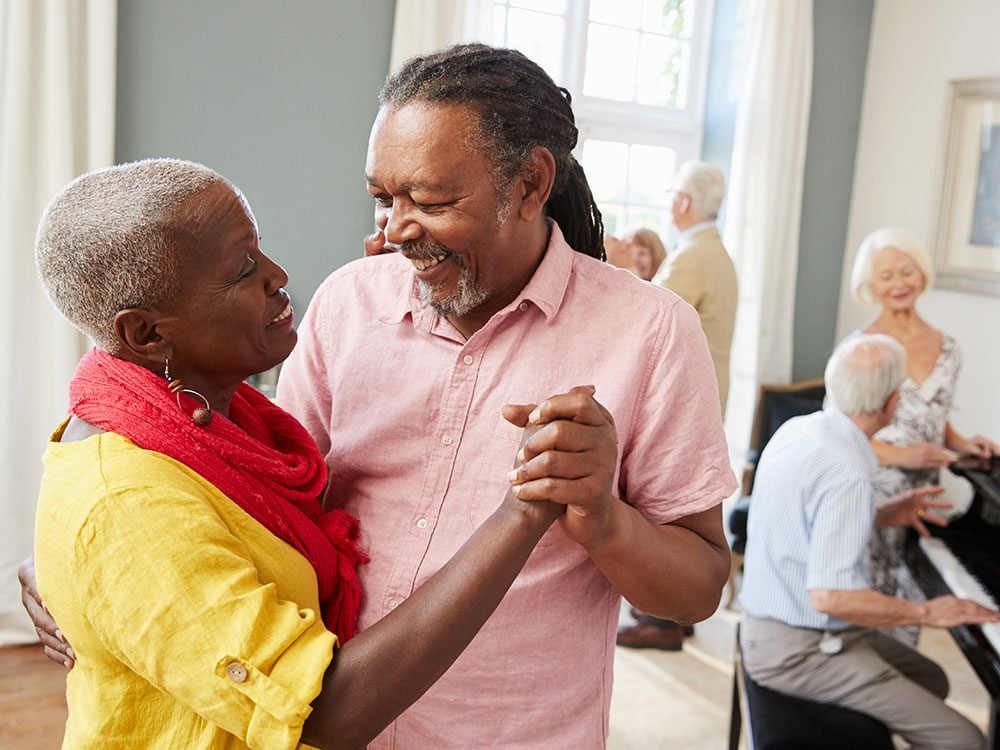
The Best Exercises For Seniors
Dancing
Put down the runners, and lace up your dancing shoes: Believe it or not, dancing is one of the best exercises for seniors when it comes to benefits for mind and body. One study compared the effects of dancing to walking, stretching and toning in adults aged 60 to 79. Over a six month period, only dancing slowed the degeneration of cerebral white matter—a process that’s associated with cognitive decline. The study suggested the physical, social and mental challenges of dancing (think memorizing steps!) are behind these unique benefits. Further research has shown that dancing can help curb anxiety and even boost happiness through social bonding.
Dancing also counts towards the goal of 150 minutes of moderate to vigorous exercise per week, as recommended for adults 65 and up in the Canadian 24-Hour Movement Guidelines. For maximum benefits, the guidelines suggest spreading out that aerobic activity over the course of the week in at least 10 minute intervals.
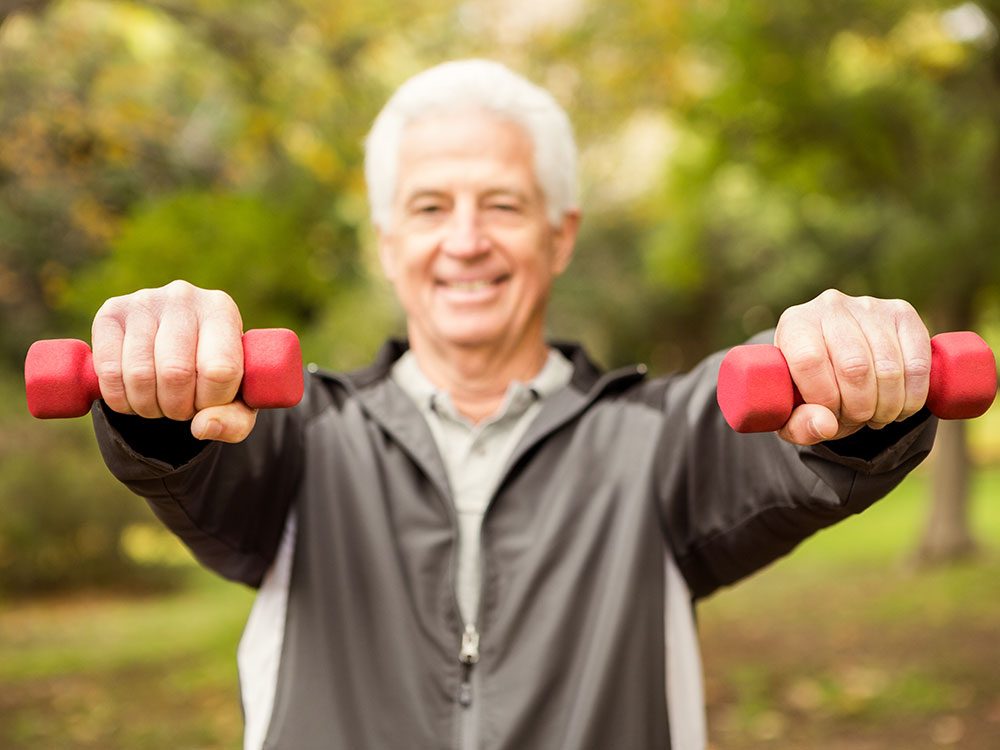
Strength Training
Strength training doesn’t have to involve pumping iron in a sweaty gym. In fact, you tackle a bodyweight exercise routine like this seven minute workout from the comfort of your own home.
The health benefits of strength training exercises for seniors go well beyond a trimmer, more toned body. In fact, strength training has been shown to:
- Strengthen bones
- Improve brain function
- Improve balance
- Increase muscle mass
- Help manage chronic conditions including arthritis, back pain, obesity, heart disease, depression and diabetes
- Increase metabolism and reduce body fat
How much strength training is enough to reap these rewards? The Canadian Physical Activity Guidelines recommend resistance exercises for all major muscle groups at least two times a week.
Try these daily habits to help prevent muscle loss.
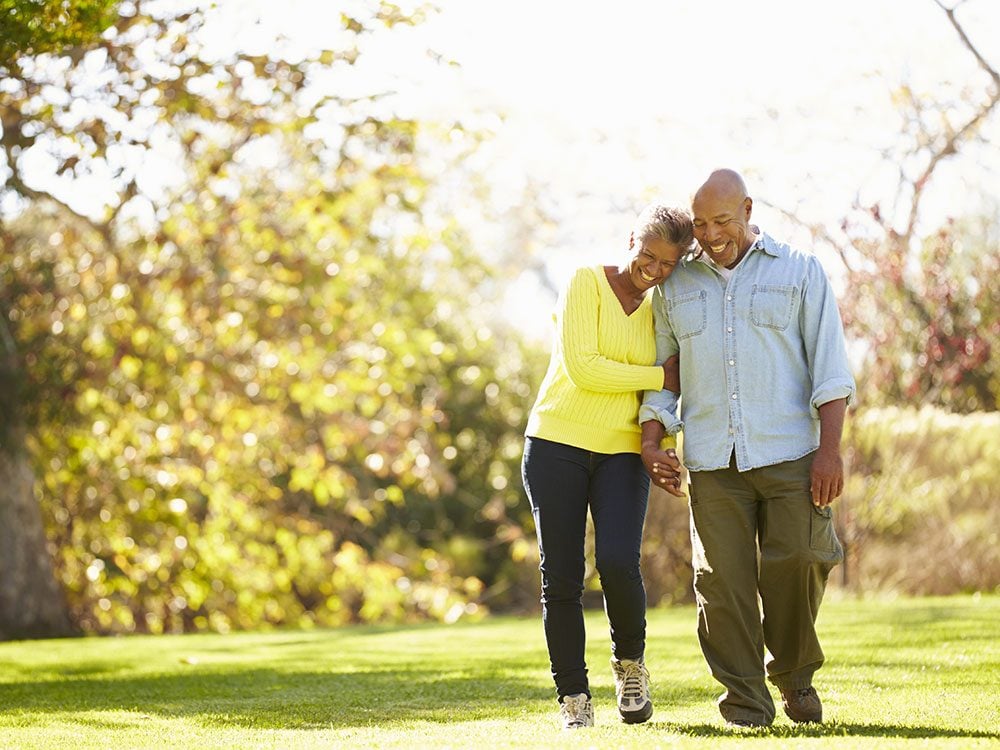
Walking
Although it’s often something we take for granted, walking can provide significant health benefits. Aside from being a means of getting from point A to point B, research has shown walking can:
- Lower blood pressure
- Lower cholesterol
- Reduce your risk of diabetes
- Boost immune function
- Ease joint pain
- Curb your sweet tooth
- Improve your mood
The best thing about walking is that it’s free (no gym membership required!), you don’t need any equipment, and you can do it just about anywhere. If you’re concerned about safety, or suffer from a medical condition that puts you at risk of a fall, make it a social activity. Walk in a public place, invite a walking partner, carry a phone with you or invest in a mobile alert button.
Here’s what can happen when you start walking 10,000 steps a day.
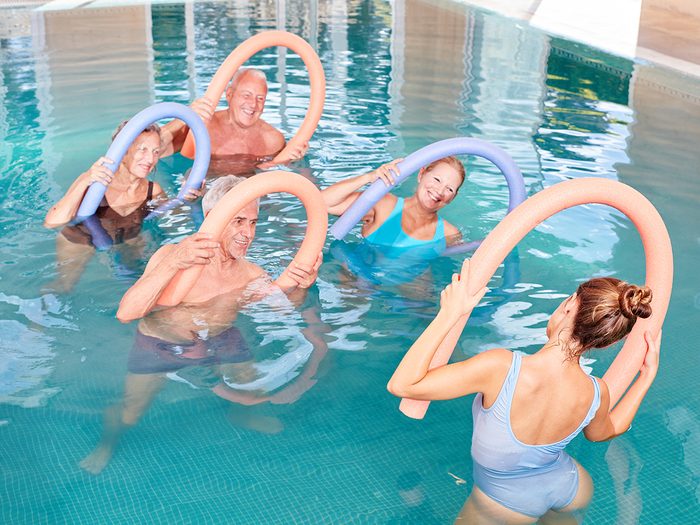
Swimming
As a physical activity, swimming gives you the best of both worlds. Although it’s low-impact exercise that’s easy on the joints, it does a body good in a number of ways, ticking both the aerobic and strength-training goals set by Canada’s Physical Activity Guidelines.
According to researchers, swimming regularly can reduce your risk for heart disease and stroke, reduce stress and improve your mood. The perfect total body workout, swimming works all the major muscle groups (legs, back, shoulders, chest and abdominals), and can be done either individually or socially. Set a challenge for yourself in the pool, either to beat your personal best or to compete against a fellow swimmer. And most importantly, have fun!
Read up on the proven benefits of group fitness classes.
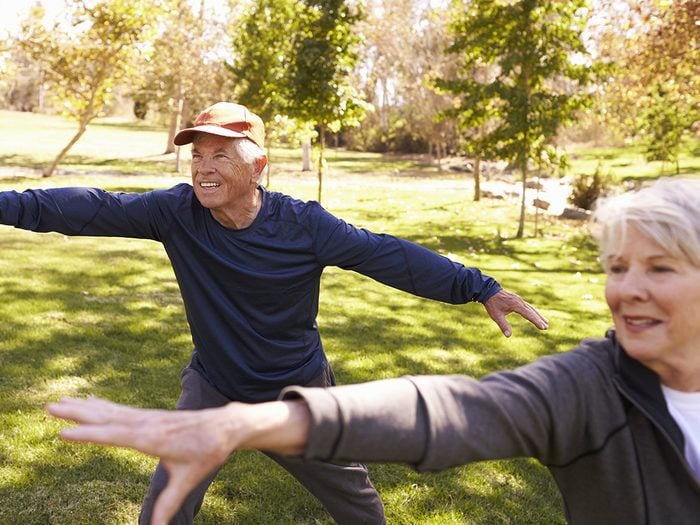
Tai Chi
Tai chi helps build strength, flexibility and balance with minimal impact on your joints. It can be done at any age and in any setting—at the gym, in the park or in your home. Once you learn the moves and the routine, you can do it in a group or individually.
In addition to improving balance—a key consideration as you age—tai chi is also great for the mind. Its slow and deliberate movements demand exacting concentration, putting you into a state of meditative flow. (Here’s what can happen when you start meditating every day.)
In terms of the Canadian Physical Activity Guidelines, tai chi is considered a strength training exercise as it works all of your major muscle groups, with particular emphasis on legs, shoulders and core. Include it as one (or both!) of your two strength training exercises each week.
Next, find out why chair yoga is becoming one of the most popular exercises for seniors.